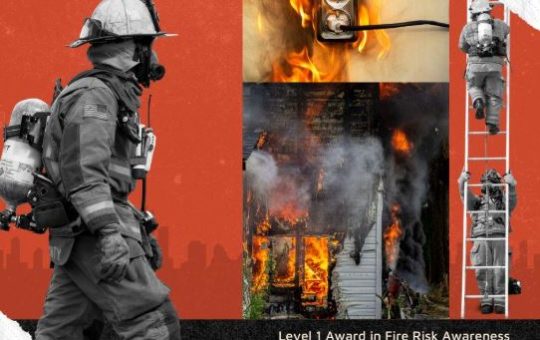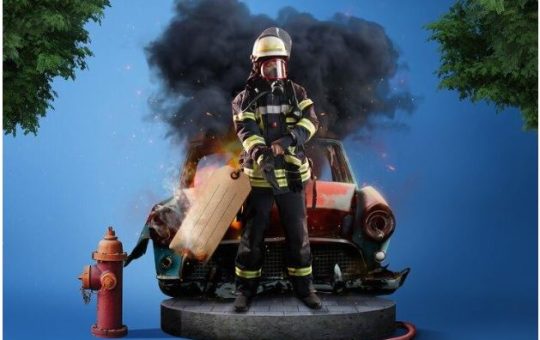
Level 2 Award in Industrial Firefighting Techniques
Level 2 Award in Industrial Firefighting Techniques
Course Overview The Level 2 Award in Industrial Firefighting Techniques is designed for individuals working in industrial environments who are responsible for dealing with fire-related emergencies. This course provides specialized knowledge and practical firefighting techniques necessary for safely managing and responding to industrial fires. It focuses on the use of fire suppression systems, safe firefighting practices, and the application of specific techniques in industrial settings. This qualification is ideal for employees working in high-risk environments such as factories, warehouses, and manufacturing plants where fire safety is a critical concern. Benefits- Specialized Skills for Industrial Environments: Learn firefighting techniques tailored for industrial settings.
- Enhanced Safety: Gain the knowledge to prevent and manage industrial fires effectively.
- Regulatory Compliance: Ensure adherence to industrial fire safety standards and regulations.
- Hands-on Training: Practical skills in using industrial firefighting equipment and systems.
- Career Progression: Enhance your employability and career prospects in industrial fire safety roles.
- Understand fire behavior in industrial settings and the types of fires commonly encountered.
- Learn the correct use of industrial firefighting equipment, including hoses, fire blankets, and suppression systems.
- Gain the ability to safely handle hazardous materials during a fire.
- Understand the roles and responsibilities of industrial fire responders and their coordination with emergency services.
- Be equipped to conduct fire risk assessments and develop fire safety plans in an industrial environment.
- Know how to implement firefighting techniques and strategies to minimize fire damage and ensure safety.
- Job Roles:
-
- Industrial Firefighter
-
- Fire Safety Officer
-
- Emergency Response Coordinator
-
- Health & Safety Officer
- Further Training:
-
- Level 3 Award in Fire Safety Management
-
- Industrial Fire Safety Risk Assessment
-
- Firefighting Leadership and Management Courses
- Industries:
-
- Manufacturing Plants
-
- Oil & Gas Industry
-
- Chemical and Pharmaceutical Plants
-
- Power Generation Facilities
-
- Logistics and Warehousing
- Specialized Pathways:
- This qualification can help individuals progress to leadership roles in fire safety, such as Industrial Fire Safety Manager, where they can oversee safety policies, training programs, and emergency response teams.
Study Units
The Level 2 Award in Industrial Firefighting Techniques course includes the following modules:
- Introduction to Industrial Fire Safety
-
- Overview of fire hazards in industrial environments
-
- Legal requirements and fire safety regulations in industrial workplaces
- Types of Industrial Fires
-
- Classifications of fires (A, B, C, D, and electrical)
-
- Identifying fire risks specific to industrial settings
- Firefighting Equipment and Systems
-
- Types of firefighting equipment used in industrial settings
-
- Operation of fire extinguishers, hoses, fire blankets, and suppression systems
- Fire Safety Protocols and Procedures
-
- Fire prevention measures for industrial facilities
-
- Emergency response and evacuation procedures in case of industrial fires
- Practical Firefighting Techniques
-
- Hands-on training in operating firefighting equipment
-
- Managing fire situations and ensuring safety during firefighting operations
- Risk Assessment and Fire Safety Planning
-
- Conducting fire risk assessments in industrial environments
-
- Developing and implementing fire safety plans and emergency response strategies
Upon successful completion, learners will be able to:
-
Understand Basic Fire Principles: Explain how fires start and how they spread.
-
Identify Common Fire Hazards: Recognize potential fire risks within different workplace environments.
-
Promote Fire Prevention Practices: Describe practical methods to reduce the likelihood of fire incidents.
-
Understand Emergency Procedures: Follow correct steps during fire alarms and evacuations.
-
Demonstrate Awareness of Safety Equipment: Understand the role of fire alarms, extinguishers, and emergency signage.
-
Support Workplace Safety: Contribute responsibly to a safe workplace culture by adhering to fire safety policies.
This qualification is designed for:
-
All employees who require a basic understanding of fire safety.
-
New recruits as part of workplace induction training.
-
Staff working in offices, retail, schools, factories, warehouses, or hospitality settings.
-
Volunteers and part-time workers in public or community organizations.
-
Anyone wishing to contribute to maintaining a safe and compliant work environment.
Our assessment process is designed to ensure every learner achieves the required level of knowledge, skills, and understanding outlined in each course unit.
Purpose of Assessment
Assessment helps measure how well a learner has met the learning outcomes. It ensures consistency, quality, and fairness across all learners.
What Learners Need to Do
Learners must provide clear evidence that shows they have met all the learning outcomes and assessment criteria for each unit. This evidence can take different forms depending on the course and type of learning.
Types of Acceptable Evidence
Assignments, reports, or projects
Worksheets or written tasks
Portfolios of practical work
Answers to oral or written questions
Test or exam papers
Understanding the Structure
Learning outcomes explain what learners should know, understand, or be able to do.
Assessment criteria set the standard learners must meet to achieve each learning outcome.
Assessment Guidelines
All assessment must be authentic, current, and relevant to the unit.
Evidence must match each assessment criterion clearly.
Plagiarism or copied work is not accepted.
All learners must complete assessments within the given timelines.
Where applicable, assessments may be reviewed or verified by internal or external quality assurers.
Full learning outcomes and assessment criteria for each qualification are available from page 8 of the course handbook.
Top Courses
No results found.
Related Courses
Let's Get in touch
Deleting Course Review
Course Access
This course is password protected. To access it please enter your password below:



